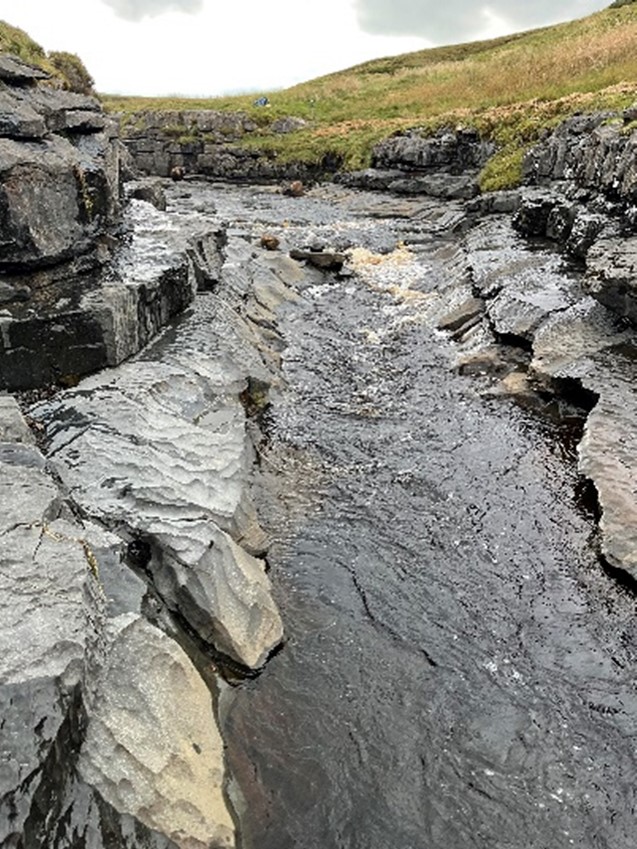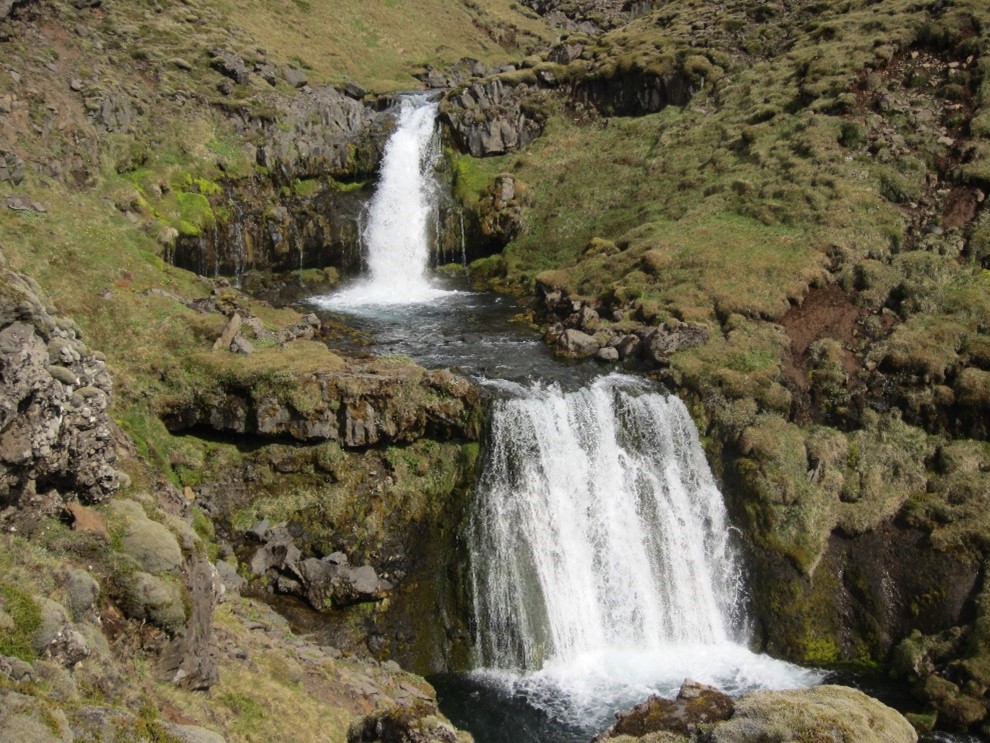IAP-25-041
Physical and chemical drivers of bedrock river channel erosion
Bedrock rivers are critical features of upland landscapes, with the feedbacks and interactions between erosion processes fundamental in controlling the rate and form of landscape evolution (Whipple and Tucker, 1999; Baynes et al., 2022). The rate at which rivers erode into underlying bedrock is determined by a range of climatic and lithological controls (e.g., flood frequency, rock strength, etc.), which in turn control the relative rates of chemical (e.g., dissolution) and physical (e.g., abrasion, plucking) processes. Predicting how bedrock erosion will respond to variations in climate requires a more detailed understanding of the current balance of and interactions between in-situ chemical and physical weathering and erosion processes. Our current understanding is restricted by a lack of critical observations from the field and laboratory experiments. Without well-established baseline conditions, it is difficult to characterise representative erosion rates and predict future climate-induced changes in landscape evolution.
The project will make use of a recently established Bedrock River Observatory in the North Pennines (~1.5 hour drive from Durham) combined with a number of other bedrock systems and features in the region (e.g., High Force on the River Tees) and the Seljalandsa River in southern Iceland. The aim of the project is to quantify rates of contemporary weathering and fluvial erosion, explore how they vary spatially, and contrast these with millennial erosion rate averages derived from cosmogenic radionuclide analysis. This information will be used to better understand bedrock river channel form and evolution. The key research questions are:
1. How do chemical and physical weathering and erosion rates vary in space (lithology, climate, mechanism) and across timescales in bedrock river landscapes?
2. How does chemical and physical weathering condition bedrock erosion by abrasion and plucking processes?
3. How do spatial patterns in rock erodibility and erosion process control channel form?


Click on an image to expand
Image Captions
Trout Beck, Moor House Bedrock River Observatory.,Seljalandsa River, Iceland.
Methodology
The project will have a strong practical focus, with the main project aims addressed using a combination of fieldwork, laboratory work and data analysis. River channels in the field observatory are incised into interbedded Carboniferous limestone, with variable alluvial cover. Bedrock erosion is driven by both physical and chemical mechanisms (abrasion, plucking, dissolution) that are also conditioned by weathering processes (e.g., freeze-thaw). Elsewhere, the erosion rate of regional bedrock landforms (e.g., High Force and Cauldron Snout waterfalls on other tributaries of the River Tees) are largely unknown. It is therefore important to collect additional data from channels where plucking processes are likely to be more dominant, and where regional lithology is more varied than the field observatory. Similarly, the Seljalandsa River in Iceland represents an area of more diverse volcanic lithologies where spatial patterns of rock erodibility and erosional processes are hypothesised to control larger-scale channel form.
The project can be tailored around several approaches, depending on mutual interests. These could include, but are not limited to:
1) Use of cosmogenic radionuclides to quantify long-term patterns of erosion in bedrock river systems to determine controls on larger-scale evolution of bedrock channel systems in post-glacial landscapes.
2) Small-scale laboratory experiments to explore the interaction of chemical and physical drivers of erosion, and effects of bedrock erodibility (erosion mill).
3) Field measurements of weathering/erosion mechanisms and flow properties (inc. small-scale experiments) and potential feedback mechanisms.
4) Field surveys and measurements of bedrock erodibility, erosion processes and wider channel form.
Project Timeline
Year 1
Literature review and familiarisation with field areas (GIS analysis)
Design and setup of field monitoring equipment
Design and setup of small-scale laboratory
Collection and analysis of UK field data
Collection of UK cosmogenic radionuclide samples
Year 2
Fieldtrip to Iceland (cosmogenic radionuclide samples, field surveys)
Preparation of cosmogenic radionuclide data
Continued collection and analysis of UK field data
Design/undertaking of laboratory experiments.
Analysis of laboratory experiment results
Year 3
Analysis of all field data
Analysis of laboratory data
Analysis of cosmogenic radionuclide concentrations
Paper writing and compilation of thesis
Year 3.5
Complete writing thesis and papers
Training
& Skills
We anticipate that this project will be completed as a series of publications, with support and training in scientific writing. Technical training will depend, to some extent, on the direction that the student wishes to take the project, but could include design and running of novel field and small-scale laboratory experiments, high-resolution laser scanning of bedrock surfaces to quantify patterns and rates of surface lowering and sample collection/preparation for cosmogenic radionuclide analysis. There is also scope for the student to gain experience in geochemical laboratory analysis and small-scale physical experiments to explore geochemical processes. IAPETUS also provides a wide range of training opportunities to its students, and we will discuss the student’s training needs and interests at the outset of the project. Training will be provided in quantitative analysis of high-resolution DEMs. The student will gain experience in efficiently analysing large and complex datasets.
References & further reading
Dingle, E.H., Baynes, E., Hall, A., & Warburton. J. (2025) “Erosion dynamics in carbonate bedrock channels inhibit weathering processes”. Earth Surface Processes and Landforms, Volume 50, Issue 5, e70067,
Larimer, J. E., Yanites, B. J., & Jung, S. J. (2022). A Field Study on the Lithological Influence on the Interaction Between Weathering and Abrasion Processes in Bedrock Rivers. Journal of Geophysical Research: Earth Surface, 127(4), e2021JF006418.
Riebe, C. S., Kirchner, J. W., & Finkel, R. C. (2004). Erosional and climatic effects on long-term chemical weathering rates in granitic landscapes spanning diverse climate regimes. Earth and Planetary Science Letters, 224(3-4), 547-562.
Whipple, K. X., Hancock, G. S., & Anderson, R. S. (2000). River incision into bedrock: Mechanics and relative efficacy of plucking, abrasion, and cavitation. Geological Society of America Bulletin, 112(3), 490-503.

